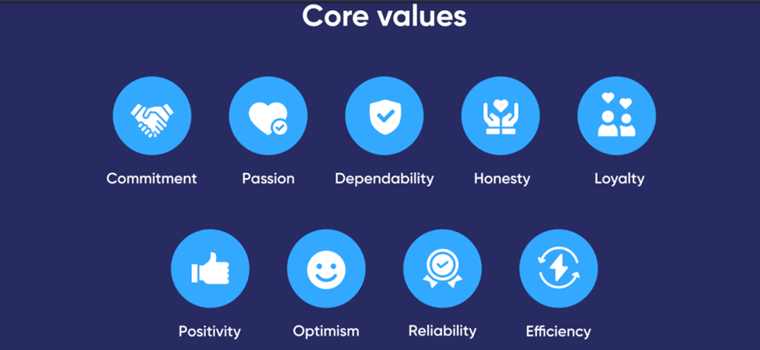Introduction
Rob Gofourth, a self-described “operations junkie” and experienced leader who is passionate about connecting corporate strategy to employee achievements, recently led a Customer Engagement Leadership Council Virtual Roundtable on the topic of authentic leadership. Seeking input and leadership practices from members, he examined how and why leading authentically can bring about greater employee loyalty, and lead to happier and more productive teams.
Abstract
As employees, we all have discretionary energy and we can determine where to spend that energy. As leaders, we can create a stronger team dynamic and achieve superior results if employees are willing to spend their discretionary energy on the team and company. The easiest way to do this is by being a transparent and authentic leader.
Key Take-Aways
- An understanding of how to be authentic in a natural way
- Examples of how to measure the impact on being authentic
- Insight on how to help your employees understand their positive contribution and impact
Rob opened the discussion by asking members, “How are you authentically connecting with your team remotely?” He received a variety of useful answers, as highlighted below:
- We encourage all employees to be on camera. We are also conducting one-on-one conversations that focus on the employee and their home/health situation, not work matters.
- We are allowing more space for non-business conversations and providing more opportunities to connect on a personal level.
- We conduct one-on-one conversations with employees and discuss what they want to accomplish.
- We encourage supervisors to make sure they start meetings with an ice breaker and recognize employee accomplishments. (Several members noted that they used ice breakers for virtual meetings.)
- As a leader, I try to be vulnerable and share struggles similar to my team’s challenges.
- I author a monthly newsletter that recognizes team member accomplishments and includes features on employee and their stories, hobbies and challenges. (This is one way of providing the kind of in-person “coffee talk” that the pandemic has largely eclipsed.)
- I try to address how my employees can effectively interact with the many external vendors we work with, and to assess the challenges and hurdles they face.
- My company tries to be intentional about scheduling time for “straight talk and providing opportunities for true employee engagement (separate from work discussions).
These member responses seemed to indicate that there were many authentic leaders in attendance! Next, the members discussed the various ways they showed vulnerability with their teams. One member shared that she always apologizes when she is wrong and admits that she often suffers from the same customer frustrations that her team does. Another shared that they ask for help from the team and communicate if/when they are feeling vulnerable.
Rob noted that, “we need to cultivate active listening or we may lose the opportunity to truly hear others. He shared that he has developed the habit of showing genuine interest, asking questions when statements aren’t clear, and summarizing conversations to help reflect employee’s feelings and foster better connections. The value of listening to understand as opposed to listening to respond was also mentioned.

What is authentic leadership?
Rob highlighted a study from Harvard Business Review that showed that many people don’t really understand what authentic leadership is. As he stated, “authenticity is driven by others’ opinions of you.” He shared these three components of authentic leadership:
- Leader’s words must match deeds. Don’t make a statement and then act differently.
- Find common ground and adjust your message to your audience. Adapt your communication style to who you are speaking with.
- You must be comfortable with vulnerability. It’s okay to say “I don’t know the answer to that,” for example.
Rob reviewed the core values below. All are tenets of good character and leadership, and arguably should be practiced by managers and employees alike:

Rob singled out honesty as an important core value, and noted that being dishonest means you will likely lose credibility with your employees. As stated, there may be instances when you can’t discuss certain matters with employees, but you can [usually] honestly say that you can’t discuss them. The value of being an organized and efficient leader who doesn’t waste others’ time was also championed.
Rob briefly discussed the value of connecting organizational vision and strategy to specific, tactical employee efforts and achievements. He observed that it’s important to help team members understand how their efforts contribute to the company overall and why their work makes a difference. As one member put it, “helping [employees] understand the why and the connections is key.”
Measuring authenticity
As the virtual event came to a close, challenges in measuring authenticity were discussed. Although concrete measurement may be difficult, Rob shared his belief that most leaders will be able to tell when authenticity is in place. Managers will see a shift in culture, and employees will spend at least some of their discretionary energy on others, helping ensure team — and organizational — success. Therein lays the true value and power of authentic leadership.




